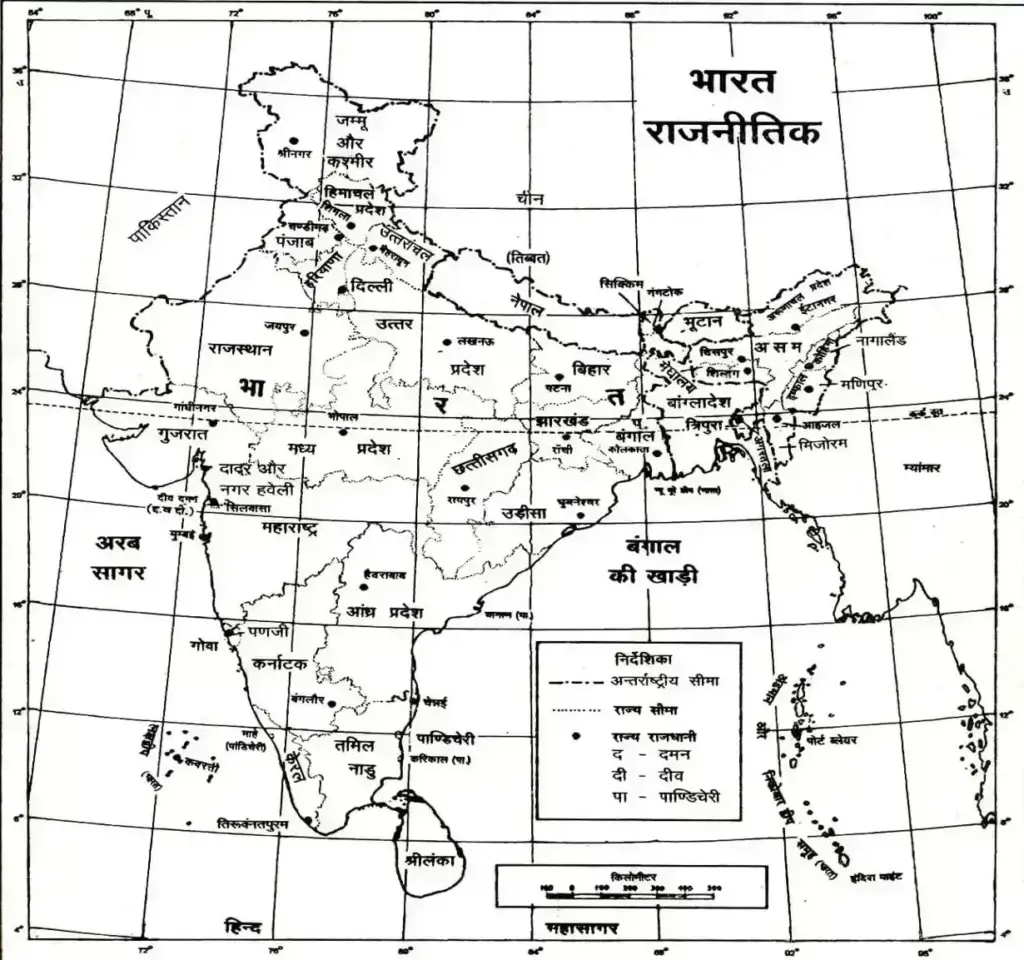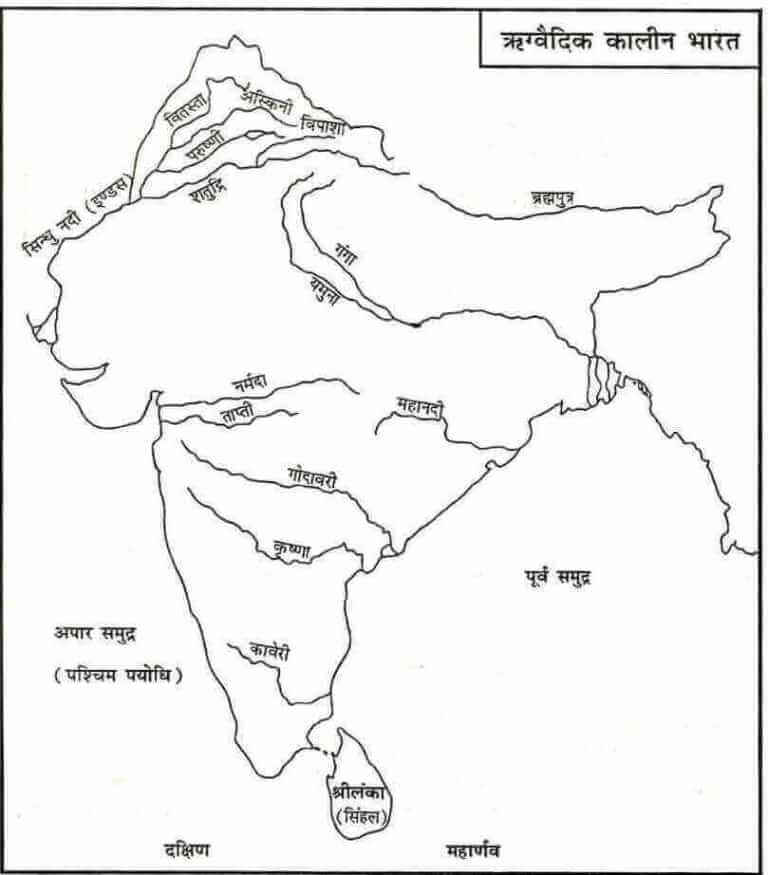Tense in Hindi – Learn Tense in Hindi with Examples
Tense in Hindi Definition – Tense (काल) क्रिया का वह रूप है जो किसी कार्य या घटना के समय और घटना की दशा को व्यक्त करता है।
Type of Tense in Hindi – Present Tense (वर्तमान काल), Past Tense (भूतकाल), Future Tense (भविष्य काल)

What is Tense in Hindi? – हिंदी में काल क्रियाओं के रूपों और व्याकरणिक संरचनाओं का समूह है जो घटनाओं के समय, क्रम या निरंतरता को दर्शाने के लिए उपयोग किया जाता है। प्रत्येक काल एक अलग अर्थ को दर्शाता है और इसका उपयोग अतीत, वर्तमान और भविष्य की घटनाओं के बारे में बताने के लिए किया जा सकता है। हिंदी में काल की चार मुख्य श्रेणियां हैं: वर्तमान काल, भूत काल, भविष्य काल और पूर्ण काल।
Present Tense in Hindi –
- Present indefinite tense in hindi ( Simple Tense )
- Present continuous tense in hindi
- Present perfect tense in hindi
- Present perfect continuous tense in hindi
Past Tense in Hindi –
- Past indefinite tense in hindi ( Simple Tense )
- Past continuous tense in hindi
- Past perfect tense in hindi
- Past perfect continuous tense in hindi
Future Tense in Hindi –
- Future indefinite tense in hindi ( Simple Tense )
- Future continuous tense in hindi
- Future perfect tense in hindi
- Future perfect continuous tense in hindi
Present Tense in Hindi
Learn Present Tense in Hindi with Examples
1. Present indefinite tense in hindi ( Simple Tense )
काल की पहचान – वर्तमानकाल में किसी की आदत या हमेशा होने वाली कोई क्रिया व्यक्त करने के लिए सामान्य वर्तमानकाल का प्रयोग होता है।
वाक्य की पहचान – सामान्य वर्तमानकाल वाक्यों के अंत में ता है, ते हैं, ती है का प्रयोग होता है।
A. सकारात्मक वाक्य ( Affirmative Sentence )
वाक्य की रचना – कर्ता [ Subject ] + क्रिया [ Verb ] का 1st Form + “s” या “es” (3rd Person Singular सिर्फ) के साथ + Object.
NOTE – 3rd Person Singular मतलब [ He / She, It, Single Name ] और बांकी Subject के साथ “s” या “es” लगाने के जरुरत नहीं है।
उदाहरण –
1. मैं बाजार जाता हूँ।
I go to market.
2. वह स्कूल जाता है।
He goes to school.
B. नकारात्मक वाक्य ( Negative Sentence )
वाक्य की रचना – कर्ता [ Subject ] + do / does + not + क्रिया [ Verb ] का 1st Form + Object.
NOTE – 3rd Person Singular का मतलब [ He / She, It, Single Name ] के साथ “does not” फिर Verb का 1st Form और बांकी Subject के साथ “do not” का प्रयोग करते हैं।
उदाहरण –
मैं बाजार नहीं जाता हूँ।
I do not go to market.
2. वह स्कूल नहीं जाता है।
He does not go to school.
C. प्रश्नवाचक वाक्य ( Interrogative Sentence )
वाक्य की रचना – do / does + कर्ता [ Subject ] + क्रिया [ Verb ] का 1st Form + Object + ?
NOTE – 3rd Person Singular का मतलब [ He / She, It, Single Name ] के साथ “does” फिर Verb का 1st Form और बांकी Subject के साथ “do” का प्रयोग करते हैं।
उदाहरण –
1. क्या मैं बाजार जाता हूँ ?
Do I go to market ?
2. क्या वह स्कूल जाता है ?
Does he go to school ?
D. नकारात्मक प्रश्नवाचक वाक्य ( Negative Interrogative Sentence )
वाक्य की रचना – Do / does + कर्ता [ Subject ] + not + क्रिया [ Verb ] का 1st Form + Object + ?
उदाहरण –
1.क्या मैं बाजार नहीं जाता हूँ ?
Do I not go to market ?
2. क्या वह स्कूल नहीं जाता है ?
Does he not go to school ?
2. Present continuous tense in hindi
काल की पहचान :
वर्तमान काल में कोई क्रिया जारी है यह अर्थ व्यक्त करने के लिए इस काल का प्रयोग होता है।
वाक्य की पहचान – अपूर्ण वर्तमान काल वाक्यों के अंत में क्रिया के अंत में रहा, रही, रहे और उसके बाद में हूँ, है, हैं का प्रयोग होता है।
A.सकारात्मक वाक्य ( Affirmative Sentence )
वाक्य की रचना – कर्ता [ Subject ] + am / is / are + क्रिया [ Verb ] का 1st Form + ing + Object.
NOTE – सिर्फ I के साथ “am” और 3rd Singular कर्ता के साथ “is” और You और बहुवचन (Plural) कर्ता के साथ “are” का प्रयोग होता है।
उदाहरण –
1. रानी स्कूल जा रही है।
Rani is going to school.
2. मैं अंग्रेजी सीख रहा हूँ।
I am learning english.
B. नकारात्मक वाक्य ( Negative Sentence )
वाक्य की रचना – कर्ता [ Subject ] + am / is / are + not + क्रिया [ Verb ] का 1st Form + ing + Object.
उदाहरण –
1. रानी स्कूल नहीं जा रही है।
Rani is not going to school.
2. मैं अंग्रेजी नहीं सीख रहा हूँ।
I am not learning english.
C. प्रश्नवाचक वाक्य ( Interrogative Sentence )
वाक्य की रचना – am / is / are + कर्ता [ Subject ] + क्रिया [ Verb ] का 1st Form + ing + Object + ?
उदाहरण –
1.क्या रानी स्कूल जा रही है?
Is rani going to school ?
2. क्या मैं अंग्रेजी सीख रहा हूँ?
Am I learning english ?
D. नकारात्मक प्रश्नवाचक वाक्य ( Negative Interrogative Sentence )
वाक्य की रचना – am / is / are + कर्ता [ Subject ] + not + क्रिया [ Verb ] का 1st Form + ing + Object + ?
उदाहरण –
1.क्या रानी स्कूल नहीं जा रही है ?
Is rani not going to school ?
2. क्या मैं अंग्रेजी नहीं सीख रहा हूँ ?
Am I not learning english ?
3. Present perfect tense in hindi
काल की पहचान – वर्तमान काल में क्रिया पूर्ण हो चुकी है यह दर्शाने के लिए पूर्ण वर्तमान काल का प्रयोग किया जाता है।
वाक्य की पहचान – पूर्ण वर्तमानकाल के हिंदी वाक्यों में क्रिया के बाद में चुका है, चुकी है, चुके हैं ये शब्द या तो फिर क्रिया के अंत में या, ई, ए ऐसे अक्षर और क्रिया के बाद में है, हैं, हूँ ये शब्द का प्रयोग किया जाता है।
A. सकारात्मक वाक्य [ Affirmative Sentence )
वाक्य की रचना – कर्ता [ Subject ] + have / has + क्रिया [ Verb ] का 3rd Form + Object.
NOTE – 3rd Person Singular के साथ “has” बांकी सभी Subject के साथ “have” का प्रयोग करते हैं।
उदाहरण –
1.राजेश स्कूल जा चुका है।
Rajesh has gone to school.
2. तुमने मुझे एक पेन दिया है।
You have given me a pen.
B. नकारात्मक वाक्य ( Negative Sentence )
वाक्य की रचना – कर्ता [ Subject ] + have / has + not + क्रिया [ Verb ] का 3rd Form + Object.
उदाहरण –
1.राजेश स्कूल नहीं गया है।
Rajesh has not gone to school.
2. तुमने मुझे एक पेन नहीं दिया है।
You have not given me a pen.
C. प्रश्नवाचक वाक्य ( Interrogative Sentence )
वाक्य की रचना – have / has + कर्ता [ Subject ] + क्रिया [ Verb ] का 3rd Form + Object + ?
उदाहरण –
1.क्या राजेश स्कूल जा चुका है ?
Has rajesh gone to school ?
2. क्या तुमने मुझे एक पेन दिया है ?
Have you given me a pen ?
D. नकारात्मक प्रश्नवाचक वाक्य ( Negative Interrogative Sentence )
वाक्य की रचना – have / has + कर्ता [ Subject ] + not + क्रिया [ Verb ] का 3rd Form + Object + ?
उदाहरण –
1. क्या राजेश स्कूल नहीं गया है ?
Has rajesh not gone to school ?
2.क्या तुमने मुझे एक पेन नहीं दिया है ?
Have you not given me a pen ?
4. Present perfect continuous tense in hindi
काल की पहचान – इस काल में बहुत पहले से शुरू हुई क्रिया अभी भी जारी है यह दर्शाने के लिए इस काल का प्रयोग होता है, और एक महत्वपूर्ण बात यह है की इस काल में हमेशा क्रिया के साथ समय का वर्णन होता है।
वाक्य की पहचान – पूर्ण निरंतर वर्तमान काल के हिंदी वाक्यों में क्रिया के साथ में रहा है, रही है, रहे हैं, रहा हूँ का प्रयोग होता है।
A. सकारात्मक वाक्य ( Affirmative Sentence )
वाक्य की रचना – कर्ता [ Subject ] + have / has + been + क्रिया [ Verb ] का 1st Form + ing + Object + since / for + time.
NOTE – “Since” का प्रयोग निश्चित समय के लिए और “for” का प्रयोग अनिश्चित समय के लिए अर्थात अवधि [ Duration ] के लिए किया जाता है।
उदाहरण –
1.सोनम 9 बजे से टीवी देख रही है।
Sonam has been watching since 9 o’clock.
2. मैं तीन घंटे से अध्ययन कर रहा हूं।
I have been studying for 3 hours.
B. नकारात्मक वाक्य ( Negative Sentence )
वाक्य की रचना – कर्ता [ Subject ] + have / has + not + been + क्रिया [ Verb ] का 1st Form + ing + Object + since / for + time.
उदाहरण –
1.सोनम 9 बजे से टीवी नहीं देख रही है।
Sonam has not been watching since 9 o’clock.
2. मैं तीन घंटे से अध्ययन नहीं कर रहा हूं।
I have not been studying for 3 hours.
C. प्रश्नवाचक वाक्य ( Interrogative Sentence )
वाक्य की रचना – have / has + कर्ता [ Subject ] + been + क्रिया [ Verb ] का 1st Form + ing + Object + since / for + time + ?
उदाहरण –
1.क्या सोनम 9 बजे से टीवी देख रही है?
Has sonam been watching since 9 o’clock ?
2. क्या मैं तीन घंटे से अध्ययन कर रहा हूं?
Have I been studying for 3 hours ?
D. नकारात्मक प्रश्नवाचक वाक्य ( Negative Interrogative Sentence )
वाक्य की रचना – have / has + कर्ता [ Subject ] + not + been + क्रिया [ Verb ] का 1st Form + ing + Object + since / for + time + ?
1.क्या सोनम 9 बजे से टीवी नहीं देख रही है?
Has sonam not been watching since 9 o’clock ?
2. क्या मैं तीन घंटे से अध्ययन नहीं कर रहा हूं?
Have I not been studying for 3 hours ?
Past Tense in Hindi
Learn Past Tense in Hindi with Examples
1. Past indefinite tense in hindi ( Simple Tense )
काल की पहचान – भूतकाल में किसी निश्चित समय पर कोई क्रिया हुई या हाल ही में कोई घटना घटी यह बताने के लिए सामान्य भूतकाल का प्रयोग किया जाता है।
वाक्य की पहचान – सामान्य भूतकाल के वाक्यों के शब्द के अंत में या, यी, ये शब्द अथवा आ, ई, ए अक्षर का प्रयोग किया जाता है।
A. सकारात्मक वाक्य ( Affirmative Sentence )
वाक्य की रचना – कर्ता [ Subject ] + क्रिया [ Verb ] का 2nd Form + Object.
NOTE – यहाँ पर Singular subject और Plural subject के साथ क्रिया [ Verb ] में 2nd Form लगाते हैं।
उदाहरण –
1.राजेश आया।
Rajesh came.
2. सूर्य निकला।
The sun rose.
B. नकारात्मक वाक्य ( Negative Sentence )
वाक्य की रचना – कर्ता [ Subject ] + did not या didn’t + क्रिया [ Verb ] का 1st Form + Object.
NOTE – यहाँ पर Singular subject के साथ “did not” और Plural subject के साथ भी “did not” क्रिया [ Verb ] में 1st Form लगाते हैं।
उदाहरण –
1. राजेश नहीं आया।
2. सूर्य नहीं निकला।
The sun did not rise.
C. प्रश्नवाचक वाक्य ( Interrogative Sentence )
वाक्य की रचना – Did + कर्ता [ Subject ] + क्रिया [ Verb ] का 1st Form + Object + ?
उदाहरण –
1.क्या राजेश आया ?
Did rajesh come ?
2. क्या सूर्य निकला ?
Did the sun rise ?
D. नकारात्मक प्रश्नवाचक वाक्य ( Negative Interrogative Sentence )
वाक्य की रचना – Did + कर्ता [ Subject ] + not + क्रिया [ Verb ] का 1st Form + Object + ?
उदाहरण –
1.क्या राजेश नहीं आया ?
Did rajesh not come ?
2.क्या सूर्य नहीं निकला ?
Did the sun not rise ?
2. Past continuous tense in hindi
काल की पहचान – भूतकाल में किसी समय में कोई क्रिया जारी थी यह दर्शाने के लिए निरंतर या अपूर्ण भूतकाल का प्रयोग किया जाता है।
वाक्य की पहचान – निरंतर या अपूर्ण भूतकाल के वाक्यों के शब्द के अंत में क्रिया के अंत में रहा, रही, रहे और उसके बाद था, थी, थे अक्षर का प्रयोग किया जाता है।
A. सकारात्मक वाक्य ( Affirmative Sentence )
वाक्य की रचना – कर्ता [ Subject ] + was / were + क्रिया [ Verb ] का 1st Form + ing + Object.
NOTE – यहाँ पर Singular subject के साथ “was” और Plural subject के साथ “were” का प्रयोग किया जाता है।
उदाहरण –
1.मैं स्कूल जा रहा था।
I was going to school.
2. तुम पुस्तक पढ़ रहे थे।
You were reading the book.
B. नकारात्मक वाक्य ( Negative Sentence )
वाक्य की रचना – कर्ता [ Subject ] + was / were + not + क्रिया [ Verb ] का 1st Form + ing + Object.
उदाहरण –
1.मैं स्कूल नहीं जा रहा था।
I was not going to school.
2. तुम पुस्तक नहीं पढ़ रहे थे।
You were not reading the book.
C. प्रश्नवाचक वाक्य ( Interrogative Sentence )
वाक्य की रचना – was / were + कर्ता [ Subject ] + क्रिया [ Verb ] का 1st Form + ing + Object + ?
1.क्या मैं स्कूल जा रहा था ?
Was I going to school ?
2. क्या तुम पुस्तक पढ़ रहे थे ?
Were you reading the book ?
D. नकारात्मक प्रश्नवाचक वाक्य ( Negative Interrogative Sentence )
वाक्य की रचना – was / were + कर्ता [ Subject ] + not + क्रिया [ Verb ] का 1st Form + ing + Object + ?
उदाहरण –
1.क्या मैं स्कूल नहीं जा रहा था ?
Was I not going to school ?
2. क्या तुम पुस्तक नहीं पढ़ रहे थे ?
Were you not reading the book ?
3. Past perfect tense in hindi
काल की पहचान – जब कोई क्रिया भूतकाल के किसी (निश्चित) समय पहले अथवा उस समय तक पूरी हो गई थी, ऐसा व्यक्त्त करने के लिए पूर्ण भूतकाल के वाक्य का प्रयोग किया जाता है।
वाक्य की पहचान – पूर्ण भूतकाल के क्रिया के अंत में आ, ई, ए अक्षर तथा क्रिया के बाद था, थी, थे [ चुका था, चुकी थी, चुके थे ] अर्थात दूसरे रूप में कह सकते हैं कि वाक्य के अंत में या था, आ था, ए थे।
A. सकारात्मक वाक्य ( Affirmative Sentence )
NOTE – यहाँ पर Singular subject के साथ “had” और Plural subject के साथ भी “had” का प्रयोग किया जाता है।
वाक्य की रचना – कर्ता [ Subject ] + had + क्रिया [ Verb ] का 3rd Form + Object.
उदाहरण –
1.मैं स्कूल गया था।
I had gone to school.
2. संगीता यहां आई थी।
Sangeeta had come here.
B. नकारात्मक वाक्य ( Negative Sentence )
वाक्य की रचना – कर्ता [ Subject ] + had + not + क्रिया [ Verb ] का 3rd Form + Object.
उदाहरण –
1.मैं स्कूल नहीं गया था।
I had not gone to school.
2. संगीता यहां नहीं आई थी।
Sangeeta had not come here.
C. प्रश्नवाचक वाक्य (Interrogative Sentence )
वाक्य की रचना – had + कर्ता [ Subject ] + क्रिया [ Verb ] का 3rd Form + Object + ?
उदाहरण –
1.क्या मैं स्कूल गया था ?
Had I gone to school ?
2. क्या संगीता यहां आई थी ?
Had sangeeta come here ?
D. नकारात्मक प्रश्नवाचक वाक्य ( Negative Interrogative Sentence )
वाक्य की रचना – had + कर्ता [ Subject ] + not + क्रिया [ Verb ] का 3rd Form + Object + ?
उदाहरण –
1.क्या मैं स्कूल नहीं गया था ?
Had I not gone to school ?
2. क्या संगीता यहां नहीं आई थी ?
Had sangeeta not come here ?
4. Past perfect continuous tense in hindi
काल की पहचान – जब कोई क्रिया भूतकाल [ Past ] के किसी निश्चित समय के बहुत पहले से शुरू हो कर उस समय पर भी जारी हो ऐसा वाक्य व्यक्त्त करने के लिए पूर्ण निरंतर भूतकाल का प्रयोग किया जाता है।
वाक्य की पहचान – पूर्ण निरंतर भूतकाल के वाक्यों के अंत में ता आ रहा था, ती आ रही थी, ते आ रहे थे शब्द का प्रयोग किया जाता है।
A. सकारात्मक वाक्य ( Affirmative Sentence )
वाक्य की रचना – कर्ता [ Subject ] + had been + क्रिया [ Verb ] का 1st Form + ing + Object + since / for + time + ?
NOTE – “Since” का प्रयोग निश्चित समय के लिए और “for” का प्रयोग अनिश्चित समय के लिए अर्थात अवधि [ Duration ] के लिए किया जाता है।
उदाहरण –
1.सोनम वहाँ 25 साल से रह रही थी।
Sonam had been living there for 25 years.
2. तुम सुबह 9 बजे से खेल रहे थे।
You had been playing since 9 o’clock morning.
B. नकारात्मक वाक्य ( Negative Sentence )
वाक्य की रचना – कर्ता [ Subject ] + had not been + क्रिया [ Verb ] का 1st Form + ing + Object + since / for + time + ?
उदाहरण –
1.सोनम वहाँ 25 साल से रह नहीं रही थी।
Sonam had not been living there for 25 years.
2. तुम सुबह 9 बजे से खेल नहीं रहे थे।
You had not been playing since 9 o’clock morning.
C. प्रश्नवाचक वाक्य ( Interrogative Sentence )
वाक्य की रचना – Had + कर्ता [ Subject ] + been + क्रिया [ Verb ] का 1st Form + ing + Object + since / for + time + ?
उदाहरण –
1.क्या सोनम वहाँ 25 साल से रह रही थी ?
Had sonam been living there for 25 years ?
2. क्या तुम सुबह 9 बजे से खेल रहे थे ?
Had you been playing since 9 o’clock morning ?
D. नकारात्मक प्रश्नवाचक वाक्य ( Negative Interrogative Sentence )
वाक्य की रचना – Had + कर्ता [ Subject ] + not + been + क्रिया [ Verb ] का 1st Form + ing + Object + since / for + time + ?
उदाहरण –
1.क्या सोनम वहाँ 25 साल से रह नहीं रही थी ?
Had sonam not been living there for 25 years ?
2. क्या तुम सुबह 9 बजे से खेल नहीं रहे थे ?
Had you not been playing since 9 o’clock morning ?
Future Tense in Hindi
Learn Future Tense in Hindi with Examples
1. Future indefinite tense in hindi ( Simple Tense )
काल की पहचान – भविष्यकाल में कोई क्रिया होगी या कोई क्रिया करेगा इस अर्थ को व्यक्त करने के लिए सामान्य भविष्यकाल का प्रयोग किया जाता है।
वाक्य की पहचान – वाक्य के क्रिया [ Verb ] के अंत में गा, गी, गे का प्रयोग किया जाता है।
A. सकारात्मक वाक्य ( Affirmative Sentence )
वाक्य की रचना – कर्ता [ Subject ] + will + क्रिया [ Verb ] का 1st Form + Object.
NOTE – यहाँ पर Singular subject और Plural subject के साथ “will” का प्रयोग किया जाता है।
उदाहरण –
1.वह आम खायेगा।
He will eat mango.
2. हम मैच जीतेंगे।
We will win the match.
B. नकारात्मक वाक्य ( Negative Sentence )
वाक्य की रचना – कर्ता [ Subject ] + will + not + क्रिया [ Verb ] का 1st Form + Object.
NOTE – यहाँ पर Singular subject और Plural subject के साथ “will not” का प्रयोग किया जाता है।
उदाहरण –
1.वह आम नहीं खायेगा।
He will not eat mango.
2. हम मैच नहीं जीतेंगे।
We will not win the match.
C. प्रश्नवाचक वाक्य ( Interrogative Sentence )
वाक्य की रचना – will + कर्ता [ Subject ] + क्रिया [ Verb ] का 1st Form + Object + ?
उदाहरण –
1. क्या वह आम खायेगा ?
Will he eat mango ?
2. क्या हम मैच जीतेंगे ?
Will we win the match ?
D. नकारात्मक प्रश्नवाचक वाक्य ( Negative Interrogative Sentence )
वाक्य की रचना – will + कर्ता [ Subject ] + not + क्रिया [ Verb ] का 1st Form + Object + ?
उदाहरण –
1. क्या वह आम नहीं खायेगा ?
Will he not eat mango ?
2. क्या हम मैच नहीं जीतेंगे ?
Will we not win the match ?
2. Future continuous tense in hindi
काल की पहचान – जब भविष्यकाल में भविष्य में किसी समय पर कोई क्रिया जारी रहेगी या क्रिया के शुरू रहने की संभावना, यह व्यक्त करने के लिए निरंतर या अपूर्ण भविष्यकाल का प्रयोग किया जाता है।
वाक्य की पहचान – निरंतर या अपूर्ण भविष्यकाल वाक्य के अंत में रहा होगा अर्थात क्रिया के अंत में रहा उसके बाद होगा या होगी शब्द का प्रयोग किया जाता है।
A. सकारात्मक वाक्य ( Affirmative Sentence )
वाक्य की रचना – कर्ता [ Subject ] + will be + क्रिया [ Verb ] का 1st Form + ing + Object.
NOTE – यहाँ पर Singular subject और Plural subject के साथ “will be” का प्रयोग किया जाता है।
उदाहरण –
1.सोनम स्कूल जा रही होगी।
Sonam will be going to school.
2. वह तुम्हारा इंतजार कर रहा होगा।
He will be waiting for you.
B. नकारात्मक वाक्य ( Negative Sentence )
वाक्य की रचना – कर्ता [ Subject ] + will + not + be + क्रिया [ Verb ] का 1st Form + ing + Object.
उदाहरण –
1.सोनम स्कूल जा नहीं रही होगी।
Sonam will not be going to school.
2. वह तुम्हारा इंतजार नहीं कर रहा होगा।
He will not be waiting for you.
C. प्रश्नवाचक वाक्य ( Interrogative Sentence )
वाक्य की रचना – will + कर्ता [ Subject ] + be + क्रिया [ Verb ] का 1st Form + ing + Object + ?
उदाहरण –
1.क्या सोनम स्कूल जा रही होगी ?
Will sonam be going to school ?
2. क्या वह तुम्हारा इंतजार कर रहा होगा ?
Will he be waiting for you ?
D. नकारात्मक प्रश्नवाचक वाक्य ( Negative Interrogative Sentence )
वाक्य की रचना – will + कर्ता [ Subject ] + not be + क्रिया [ Verb ] का 1st Form + ing + Object + ?
उदाहरण –
1.क्या सोनम स्कूल नहीं जा रही होगी ?
Will sonam not be going to school ?
2. क्या वह तुम्हारा इंतजार नहीं कर रहा होगा ?
Will he not be waiting for you ?
3. Future perfect tense in hindi
काल की पहचान – भविष्यकाल में किसी निश्चित समय के पहले कोई क्रिया पूर्ण हो गई होगी यह दर्शाने के लिए पूर्ण भविष्यकाल का प्रयोग किया जाता है।
वाक्य की पहचान – वाक्य के क्रिया [ Verb ] के अंत में आ, ई, ए अक्षर और वाक्य के अंत में होगा, होगी, हूँगा ये शब्द होगा, अर्थात वाक्य के अंत में चुका होगा, चुकी होगी, चुके होंगे का प्रयोग किया जाता है।
A. सकारात्मक वाक्य ( Affirmative Sentence )
वाक्य की रचना – कर्ता [ Subject ] + will have + क्रिया [ Verb ] का 3rd Form + Object.
NOTE – यहाँ पर Singular subject और Plural subject के साथ “will have” का प्रयोग किया जाता है।
उदाहरण –
1.वह बाजार जा चुका होगा।
He will have gone the market.
2. बस पहुँच गया होगा।
Bus will have reached.
B. नकारात्मक वाक्य ( Negative Sentence )
वाक्य की रचना – कर्ता [ Subject ] + will not have + क्रिया [ Verb ] का 3rd Form + Object.
उदाहरण –
1. वह बाजार नहीं जा चुका होगा।
He will not have gone the market.
2. बस नहीं पहुंचा होगा।
Bus will not have reached.
C. प्रश्नवाचक वाक्य ( Interrogative Sentence )
वाक्य की रचना – will + कर्ता [ Subject ] + have + क्रिया [ Verb ] का 3rd Form + Object + ?
उदाहरण –
1.क्या वह बाजार जा चुका होगा ?
Will he have gone the market ?
2. क्या बस पहुँच गया होगा ?
Will bus have reached ?
D. नकारात्मक प्रश्नवाचक वाक्य ( Negative Interrogative Sentence )
वाक्य की रचना – will + कर्ता [ Subject ] + not + have + क्रिया [ Verb ] का 3rd Form + Object + ?
उदाहरण –
1.क्या वह बाजार नहीं जा चुका होगा ?
Will he not have gone the market ?
2. क्या बस नहीं पहुँच गया होगा ?
Will bus not have reached ?
4. Future perfect continuous tense in hindi
काल की पहचान – जब कोई क्रिया [ Verb ] भविष्यकाल के किसी निश्चित समय से बहुत पहले शुरू हो कर उस समय पर भी जारी रहेगी या उस समय पर समाप्त होगी ऐसे काल के वाक्य को व्यक्त करने के लिए पूर्ण निरंतरकाल प्रयोग किया जाता है।
वाक्य की पहचान – पूर्ण निरंतर भविष्यकाल के वाक्यों के अंत में ता आ रहा होगा, ती आ रही होगी, होंगे, हूँगा शब्दों का प्रयोग किया जाता है। इस काल के वाक्यों में समय के साथ संबंध को दर्शाया जाता है।
A. सकारात्मक वाक्य ( Affirmative Sentence )
वाक्य की रचना – कर्ता [ Subject ] + will have been + क्रिया [ Verb ] का 1st Form + ing + Object + since / for + time.
NOTE – यहाँ पर Singular subject और Plural subject के साथ “will have been” का प्रयोग किया जाता है।
“Since” का प्रयोग निश्चित समय के लिए और “for” का प्रयोग अनिश्चित समय के लिए अर्थात अवधि [ Duration ] के लिए किया जाता है।
उदाहरण –
राजू 2 घंटे से सोता आ रहा होगा।
Raju will have been sleeping for two hours.
2. तुम 5 घंटे से क्रिकेट खेलते आ रहे होगे।
You will have been playing cricket for 5 hours.
B. नकारात्मक वाक्य ( Negative Sentence )
वाक्य की रचना – कर्ता [ Subject ] + will not have been + क्रिया [ Verb ] का 1st Form + ing + Object + since / for + time.
NOTE – यहाँ पर Singular subject और Plural subject के साथ “will not have been” का प्रयोग किया जाता है।
उदाहरण –
1. राजू 2 घंटे से सोता नहीं आ रहा होगा।
Raju will not have been sleeping for two hours.
2. तुम 5 घंटे से क्रिकेट खेलते नहीं आ रहे होगे।
You will not have been playing cricket for 5 hours.
C. प्रश्नवाचक वाक्य ( Interrogative Sentence )
वाक्य की रचना – Will + कर्ता [ Subject ] + have been + क्रिया [ Verb ] का 1st Form + ing + Object + since / for + time. + ?
उदाहरण –
1.क्या राजू 2 घंटे से सोता आ रहा होगा ?
Will raju have been sleeping for two hours ?
2. क्या तुम 5 घंटे से क्रिकेट खेलते आ रहे होगे ?
Will you have been playing cricket for 5 hours ?
D. नकारात्मक प्रश्नवाचक वाक्य ( Negative Interrogative Sentence )
वाक्य की रचना – Will + कर्ता [ Subject ] + not + have been + क्रिया [ Verb ] का 1st Form + ing + Object + since / for + time. + ?
उदाहरण –
1.क्या राजू 2 घंटे से सोता नहीं आ रहा होगा ?
Will raju not have been sleeping for two hours ?
2. क्या तुम 5 घंटे से क्रिकेट खेलते नहीं आ रहे होगे ?
Will you not have been playing cricket for 5 hours ?
Definition of Tense in Hindi
Tense (काल) क्रिया का वह रूप है जो किसी कार्य या घटना के समय और घटना की दशा को व्यक्त करता है।
What is Tense in Hindi?
हिंदी में काल क्रियाओं के रूपों और व्याकरणिक संरचनाओं का समूह है जो घटनाओं के समय, क्रम या निरंतरता को दर्शाने के लिए उपयोग किया जाता है। प्रत्येक काल एक अलग अर्थ को दर्शाता है और इसका उपयोग अतीत, वर्तमान और भविष्य की घटनाओं के बारे में बताने के लिए किया जा सकता है। हिंदी में काल की चार मुख्य श्रेणियां हैं: वर्तमान काल, भूत काल, भविष्य काल और पूर्ण काल।
Type of Tense in Hindi
Type of Tense in Hindi – Present Tense (वर्तमान काल), Past Tense (भूतकाल), Future Tense (भविष्य काल)
What is Tense?
Tense in Hindi is the set of verb forms and grammatical structures used to denote the time, order, or continuity of events. Each tense denotes a different meaning and can be used to communicate about past, present, and future events. There are four main categories of tenses in Hindi: present tenses, past tenses, future tenses, and perfect tenses.
Present Tense
The present tense is used to talk about actions taking place in the current time, whether it’s an immediate event or one that occurs over a period of time. There are three types of present tenses: simple present, continuous present, and perfect present. Each type has its own use in communicating events and facts in the present moment.
Past Tense
The past tense is used to indicate actions or events that took place in the past. There are two types of past tenses: simple past and perfect past. The simple past is used to describe a single event, while the perfect past is used for multiple events or for describing an earlier action’s result.
Future Tense
The future tense is used to indicate actions or events that will take place in the future. This tense uses the verb stem + नम्बर (nambar) for conjugation. For example, the future tense of ‘to go’ is जायेंगे (jaayenge). In most cases, you can use जाएगा (jaaega) as an alternative form of conjugation. The result of a future action can also be expressed using this tense—for example, सो चुका होगा (so chuka hoga) means ‘it will be done’.
Perfect and Progressive Tenses
the perfect and progressive tenses are used to indicate that an action has taken place in the past or is still ongoing. The perfect tense uses the verb stem + ला (laa) for conjugation – for example, ‘I have gone’ is expressed as मैं चला हुआ (main chalaa hua). The progressive tense uses the verb stem + रहा (raha) instead – so ‘I am going’ is expressed as मैं जा रहा हूँ (main ja raha hun). It’s important to keep in mind that even though both of these tenses refer to actions in the past or present, they can be used to express future events as well.












